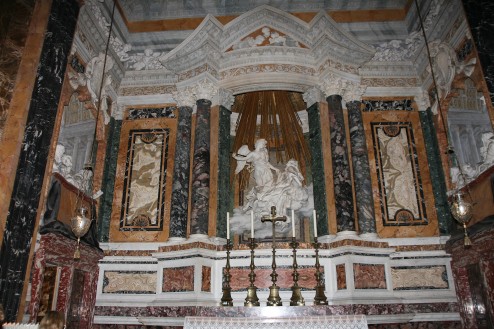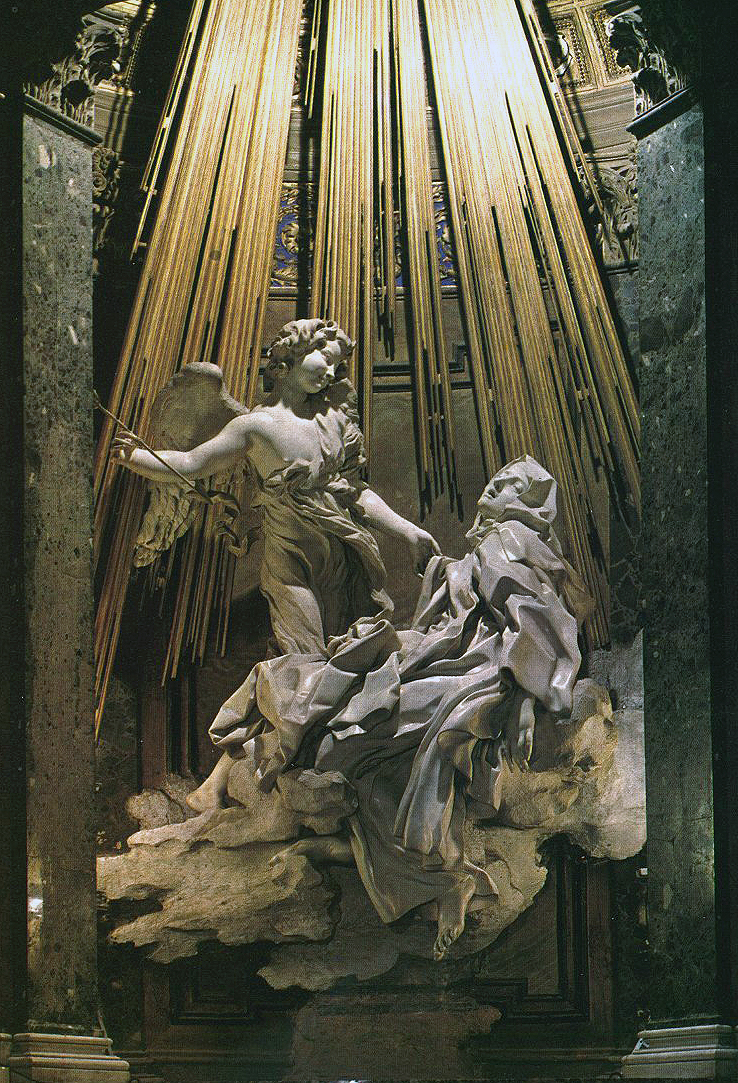This is a little awkward.
This spiritual event looks like something altogether different.
The woman on the right is St. Theresa of Ávila who led the reform of the Carmelite Order in the late sixteenth century. She also is well known for having visions, which were published and widely circulated in western Europe in the early seventeenth century. This sculpture depicts one of her visionary experiences when an angel came to her and repeatedly stabbed her with a flaming gold arrow:
“I saw in his hand a long spear of gold, and at the iron’s point there seemed to be a little fire. He appeared to me to be thrusting it at times into my heart, and to pierce my very entrails; when he drew it out, he seemed to draw them out also, and to leave me all on fire with a great love of God. The pain was so great, that it made me moan; and yet so surpassing was the sweetness of this excessive pain, that I could not wish to be rid of it…”
The most important thing to remember when trying to understand this work of art is that in the seventeenth century, people did not believe that the body and soul are separate entities. One’s spiritual self and physical self were one and the same.
This is why an ecstatic religious experience was spiritual and physical.
This sculpture is a beautiful example of the dramatic Baroque style. There is constant movement and an emphasis on spectacle and theatricality. In fact, the Cornaro family, who commissioned this work of art, appear in a sculpted theater box on either side of the main sculpture of St. Theresa and the angel (see below).
 Gianlorenzo Bernini, The Ecstasy of St. Theresa, 1645-1652, marble, life-size, Coronaro Cahpel, Santa Maria della Vittoria, Rome. Photo by Nina Aldin Thune (Flickr) available under a Creative Commons Attribution license via Wikimedia.
Gianlorenzo Bernini, The Ecstasy of St. Theresa, 1645-1652, marble, life-size, Coronaro Cahpel, Santa Maria della Vittoria, Rome. Photo by Nina Aldin Thune (Flickr) available under a Creative Commons Attribution license via Wikimedia.
More works of art by Gianlorenzo Bernini
[nggallery id=16]
Further Reading

